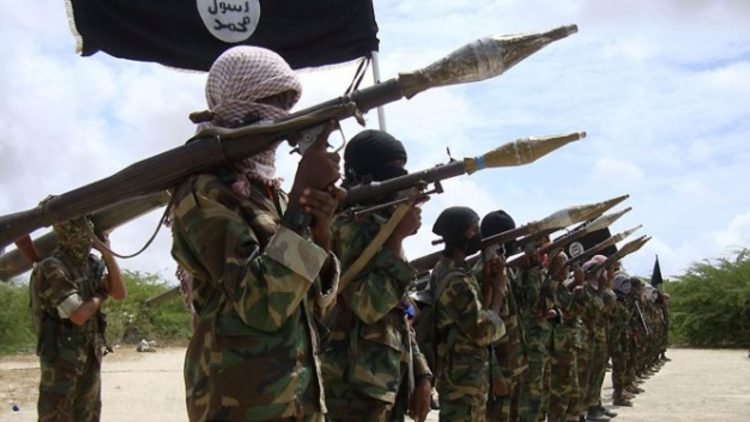The RPG-7, a Soviet-designed rocket-propelled grenade launcher, has become synonymous with insurgent warfare.
Its global proliferation and widespread use by terrorist groups are not coincidental. The RPG-7’s characteristics make it a weapon of choice for asymmetric warfare, offering utility in multiple combat scenarios. Here’s why this iconic weapon remains a staple among terrorists and insurgents.
Historical Origins and Global Spread
The RPG-7 (Ruchnoy Protivotankovyy Granatomot) was introduced by the Soviet Union in 1961, primarily as an anti-tank weapon. It quickly demonstrated its versatility on the battlefield, especially during the Vietnam War, where it was employed against U.S. forces.

After the Cold War, stockpiles of RPG-7s were acquired by various non-state actors. The dissolution of the Soviet Union further flooded global markets with these weapons, making them easily accessible to terrorist groups across Africa, the Middle East, and Southeast Asia.
Technical Specifications and Capabilities
The RPG-7 is a shoulder-fired, reusable launcher that fires unguided, fin-stabilized rockets. It measures about 950 mm (37.4″) long and weighs approximately 7 kg without a warhead, making it relatively portable for infantry use.
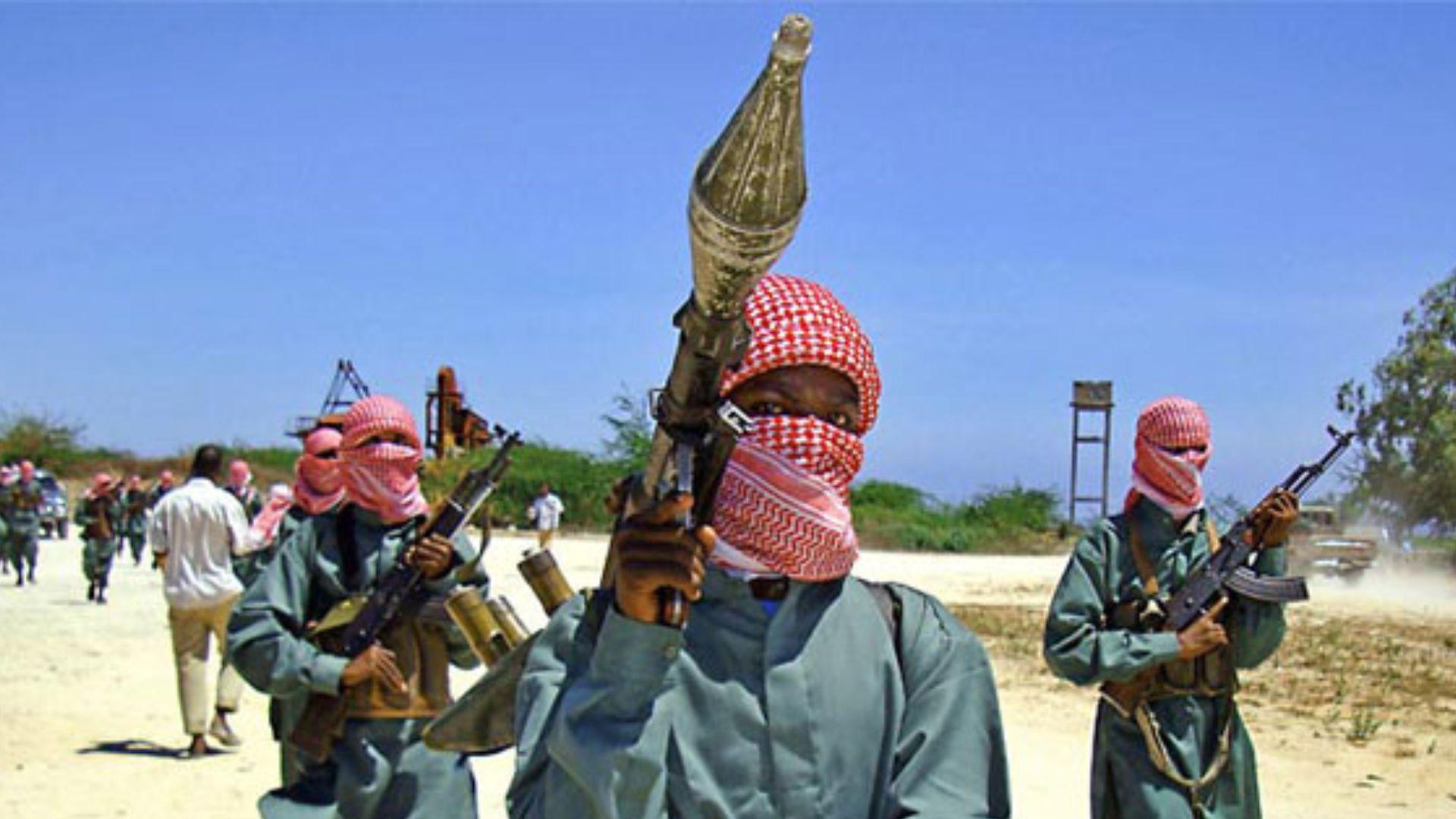
The launcher is equipped with a simple optical sight, although more advanced versions can accommodate night-vision or thermal sights. The RPG-7 can fire various warheads, with the PG-7V, a high-explosive anti-tank (HEAT) round, being one of the most common.
The PG-7V warhead has a range of up to 500 meters when fired at a stationary target, although accuracy diminishes significantly at greater distances. The HEAT round can penetrate up to 300 – 600 mm of rolled homogeneous armor (RHA), depending on the type of warhead used, making it effective against many armored vehicles.
Other types of warheads include:
- PG-7VL: An improved HEAT warhead with greater penetration capability.
- OG-7V: A fragmentation warhead designed for use against infantry and unarmored targets.
- TBG-7V: A thermobaric warhead that creates a high-temperature explosion, effective against buildings and bunkers.
The RPG-7’s variety of warheads allows it to adapt to different combat scenarios, making it useful for tasks ranging from anti-tank operations to infantry suppression.
Usage by Terrorists and Insurgents
The RPG-7 has been used by a wide range of terrorist groups and insurgents in conflicts around the world. Its adoption is a testament to its effectiveness in asymmetric warfare, where less-equipped forces face off against conventional military powers.
- Afghanistan: The RPG-7 was widely used by the Mujahideen during the Soviet-Afghan War in the 1980s. Its ability to destroy Soviet armor and helicopters made it a key weapon in the insurgents’ arsenal. Today, the Taliban continues to use RPG-7s against Afghan and NATO forces.
- Iraq: During the Iraq War and the subsequent insurgency, various groups, including Al-Qaeda in Iraq (AQI) and later ISIS, used RPG-7s to great effect against U.S. and coalition forces. The weapon’s ability to penetrate armored vehicles made it a constant threat to convoys and patrols.
- Syria: In the ongoing Syrian Civil War, the RPG-7 has been used by almost every faction, from government forces to ISIS and various rebel groups. Its versatility has made it a common sight on the battlefield, used in everything from urban combat to anti-tank operations.
- Somalia: Al-Shabaab, the Somali terrorist group, has employed RPG-7s in its attacks against government forces and African Union peacekeepers. The weapon’s ease of use and portability allow the group to carry out ambushes and hit-and-run attacks in the country’s difficult terrain.
- Palestinian Territories: Hamas and other militant groups in Gaza have used RPG-7s in their conflict with Israel. The weapon is often used in ambushes against Israeli Defense Forces (IDF) patrols and in attempts to penetrate the armor of Israeli vehicles.
Cost-Effective Firepower
The RPG-7’s low cost is a significant factor in its widespread use. A single RPG-7 launcher can be purchased for a few hundred dollars, with rockets costing even less.
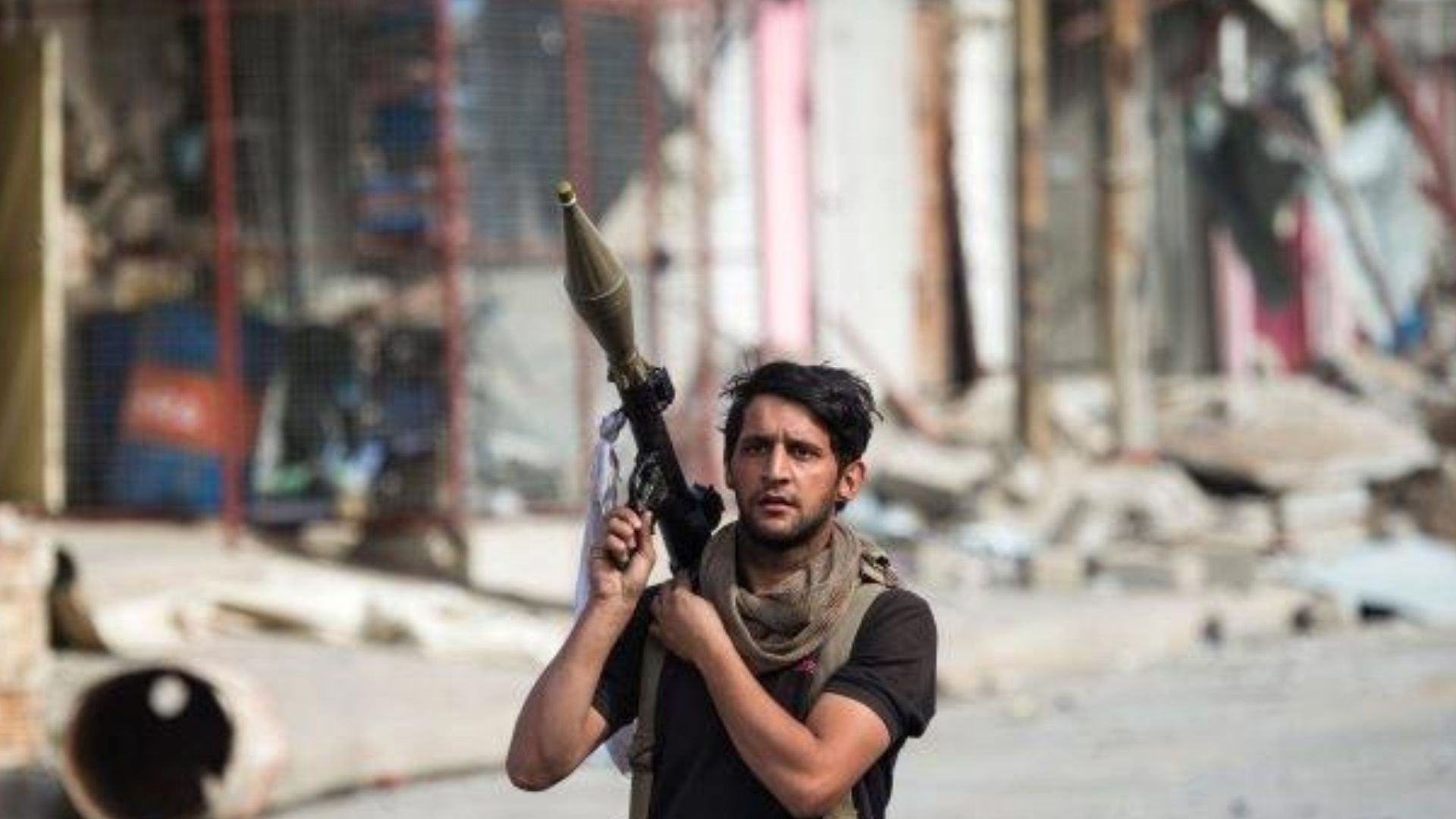
This affordability is particularly appealing to terrorist groups with limited financial resources. Unlike expensive, high-tech weaponry that requires significant investment, the RPG-7 offers substantial firepower at a fraction of the cost. This allows groups to equip large numbers of fighters with a weapon capable of neutralizing armored vehicles, destroying infrastructure, and engaging aircraft.
Simple Operation and Training
The RPG-7 is straightforward to use, which is crucial for irregular forces that often lack formal military training.
The weapon’s design includes a simple aiming system, and its operation can be taught in a matter of hours. This ease of use ensures that even inexperienced fighters can quickly become proficient in deploying the RPG-7 effectively in combat.
Durability and Reliability
The RPG-7’s rugged construction makes it exceptionally reliable in harsh environments.
Whether in the deserts of the Middle East or the jungles of Southeast Asia, the RPG-7 can withstand extreme temperatures, dust, and moisture without significant maintenance. Its durability allows it to remain functional for years, even with minimal care. This is vital for terrorist groups operating in remote areas where regular maintenance and resupply are not feasible.
Tactical Versatility
One of the RPG-7’s greatest strengths is its adaptability to different combat scenarios.

While initially designed to engage tanks, the RPG-7 can be equipped with a variety of warheads, including high-explosive anti-tank (HEAT), fragmentation, and thermobaric rounds. This versatility allows the weapon to be used against a wide range of targets:
- Armored Vehicles: HEAT warheads can penetrate the armor of many military vehicles, making it a potent anti-armor weapon.
- Fortified Positions: With its ability to breach walls and destroy cover, the RPG-7 is highly effective in urban combat, where enemies often take shelter in buildings.
- Low-Flying Aircraft: The weapon’s mobility and ease of use allow for rapid deployment against helicopters and other low-flying aircraft, particularly during ambushes.
Psychological Impact on the Battlefield
The RPG-7’s ability to cause destruction with little warning makes it a tool of both physical and psychological warfare. The sound of a rocket being launched and the ensuing explosion can create fear and confusion among opposing forces. This psychological effect is often exploited by terrorist groups to intimidate both military personnel and civilians.
Hit-and-Run Tactics
The RPG-7 is particularly well-suited for the hit-and-run tactics favored by insurgent groups. Its lightweight design allows fighters to quickly move into position, fire, and then relocate before the enemy can respond—the proverbial “shoot and scoot.”
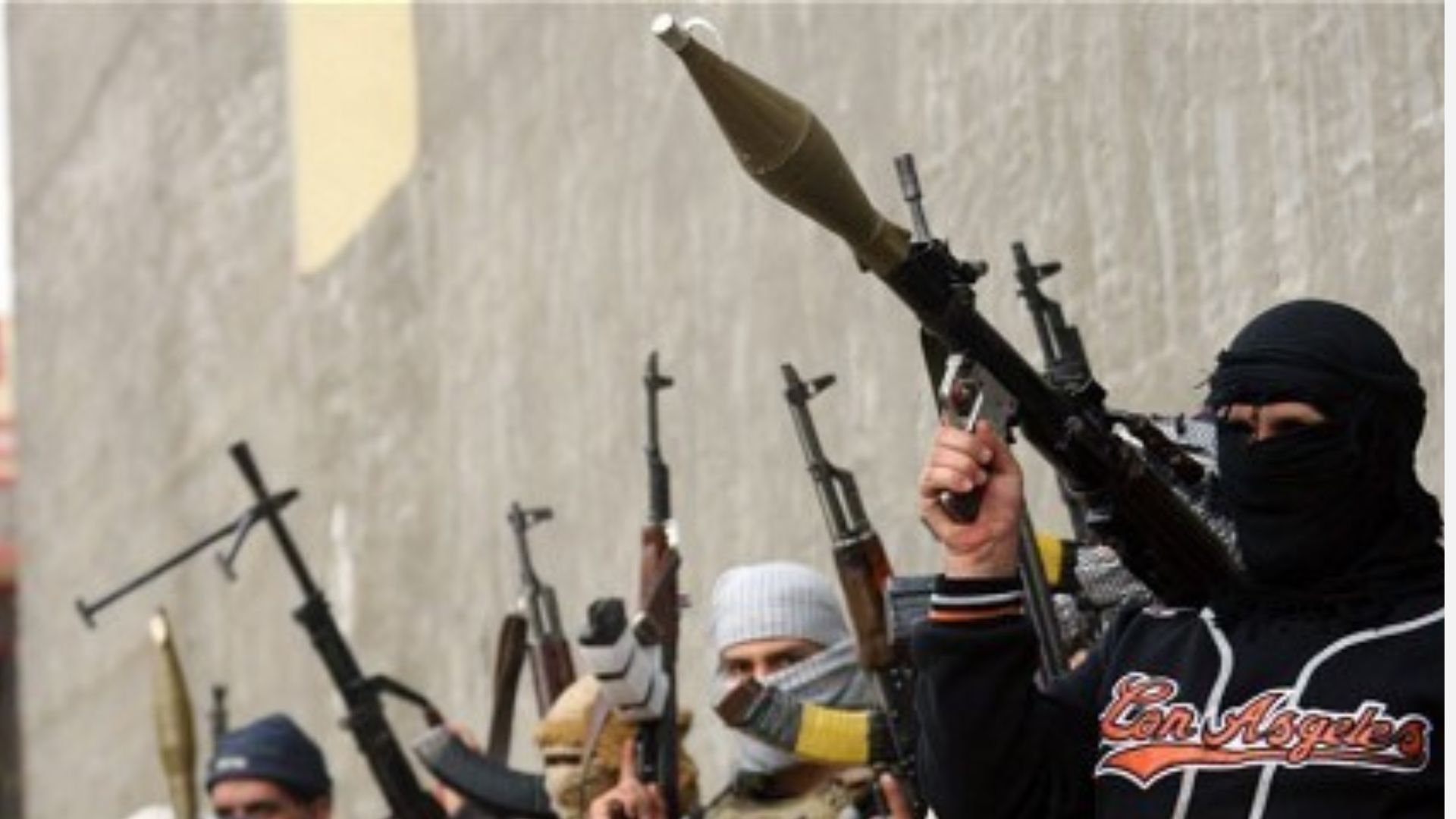
This mobility is crucial in guerrilla warfare, where the ability to strike quickly and evade capture is essential for survival. The RPG-7’s portability also means it can be used in a variety of settings, from urban environments to remote mountain regions.
Concealment and Ambush Potential
RPG-7 operators can fire from concealed positions, making it difficult for conventional forces to detect and neutralize them. The weapon can be launched from inside buildings, behind cover, or even from vehicles.
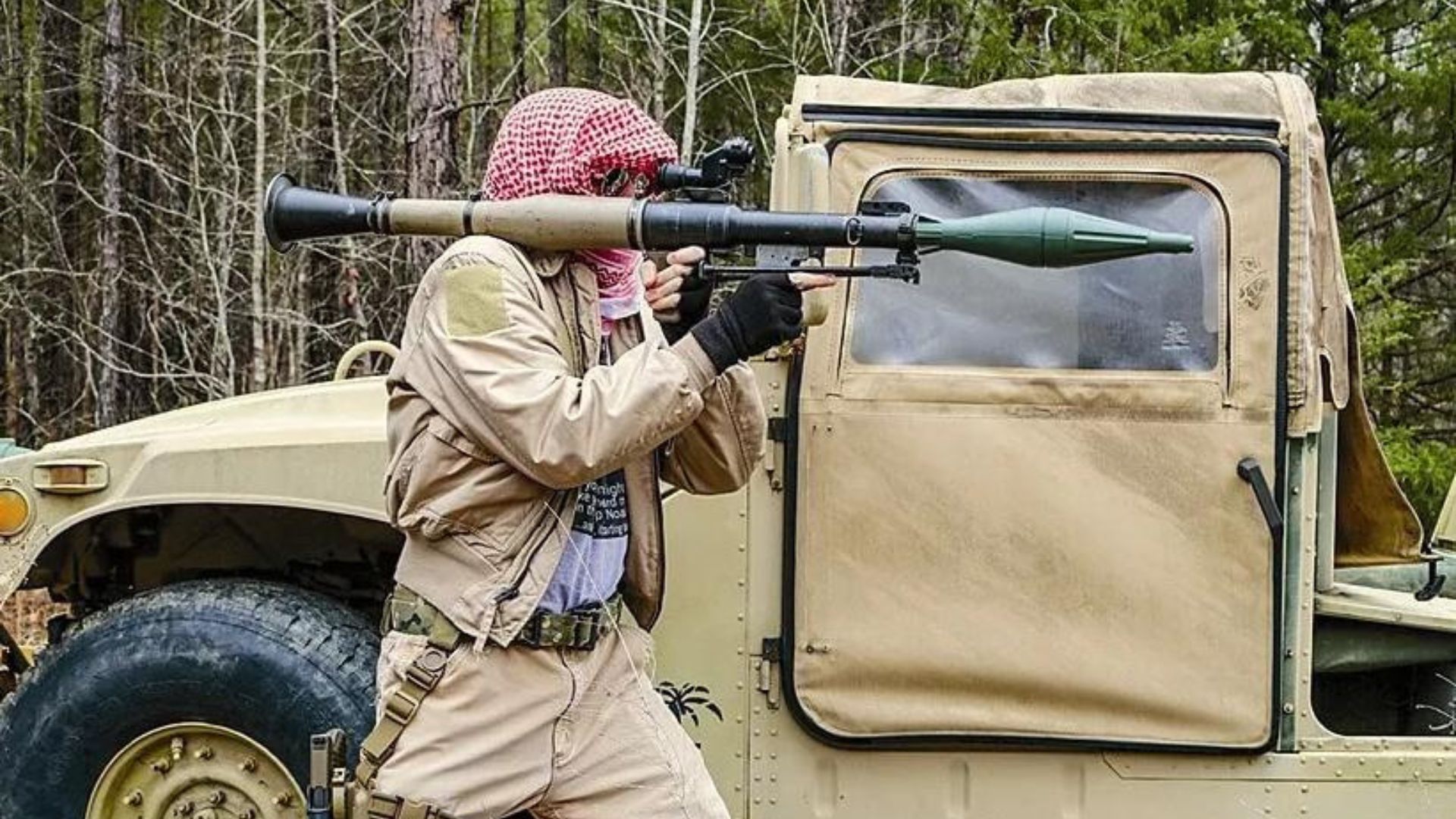
This ability to strike from hidden locations adds an element of surprise to attacks, often catching targets off guard. For terrorist groups, this feature is invaluable in maximizing the weapon’s impact while minimizing the risk to the operator.
Iconic Symbol of Resistance
The RPG-7 has become a symbol of resistance against superior military forces.
Its repeated success in various conflicts has cemented its reputation as a reliable and effective tool for those fighting against established governments and military powers.
The RPG-7 is often featured in propaganda, reinforcing its image as the weapon of choice for those challenging authority. This symbolic status further entrenches its use among insurgent groups worldwide.
Strategic Appeal
The RPG-7’s combination of affordability, ease of use, durability, and versatility makes it an ideal weapon for terrorist groups engaged in asymmetric warfare.
Its ability to deliver significant firepower at a low cost, coupled with its psychological and tactical advantages, ensures that it will continue to be a favored tool for insurgents. Understanding the factors contributing to the RPG-7’s popularity is essential for military forces aiming to counter its use on the modern battlefield.
This analysis highlights the RPG-7’s capabilities and underscores the ongoing challenges conventional forces face in conflicts where such weapons are employed.
__
Disclaimer: SOFREP utilizes AI for image generation and article research. Occasionally, it’s like handing a chimpanzee the keys to your liquor cabinet. It’s not always perfect and if a mistake is made, we own up to it full stop. In a world where information comes at us in tidal waves, it is an important tool that helps us sift through the brass for live rounds.

